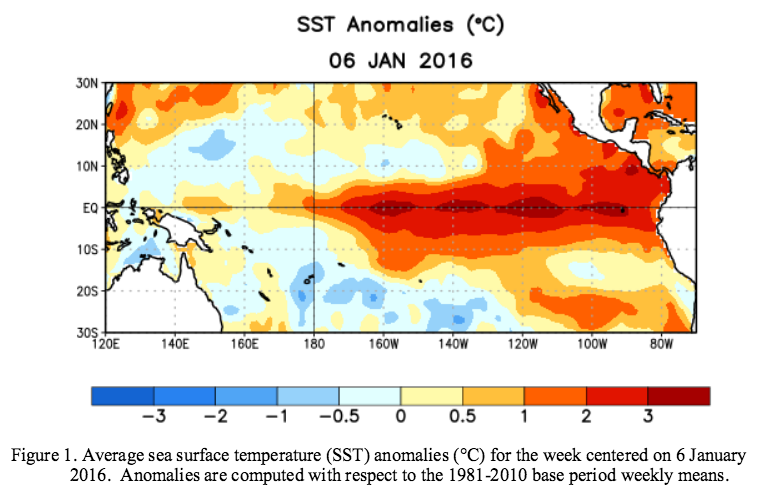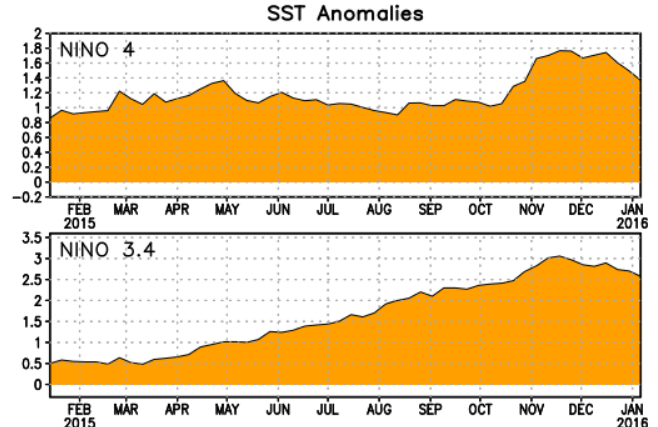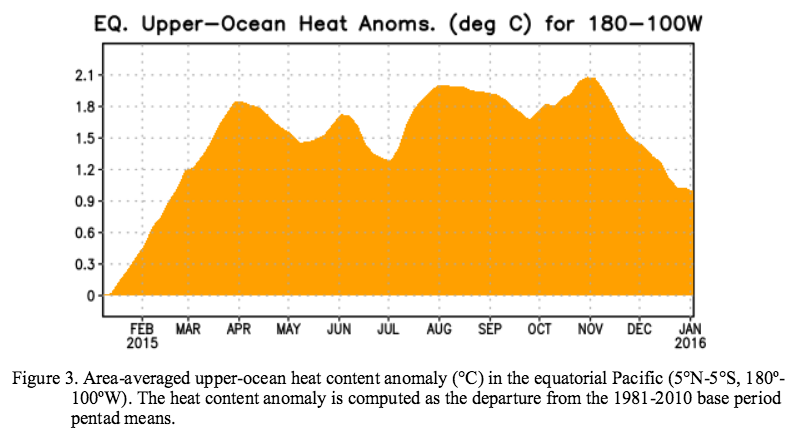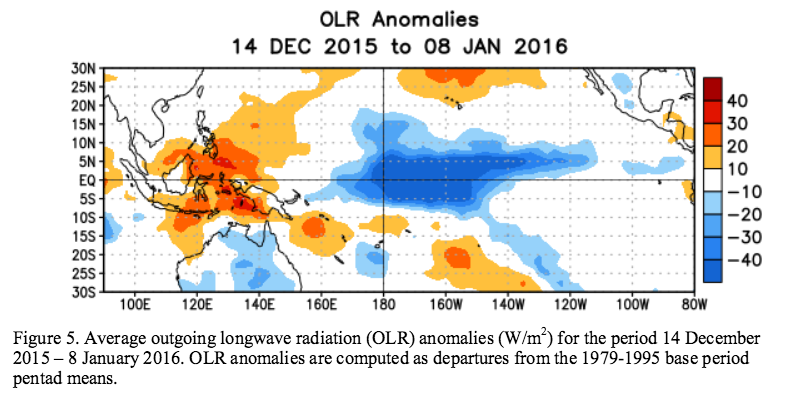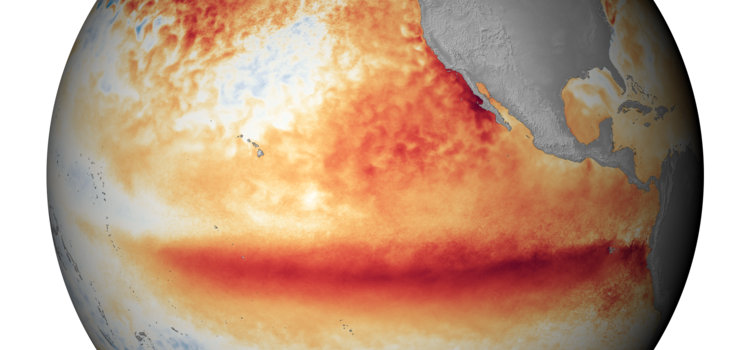
NOAA just released their official El Nino update today. They’re stating that El Nino is expected to gradually weaken through Spring 2016, returning to normal sea surface temperatures by late spring/early summer.
What they don’t mention yet is the high possibility of La Nina next season… La Nina has traditionally mean huge snowfall for North America including 811″ of snow at Squaw Valley, USA in 2010/11…
EL NIÑO/SOUTHERN OSCILLATION (ENSO) DIAGNOSTIC DISCUSSION
issued by
CLIMATE PREDICTION CENTER/NCEP/NWS
and the International Research Institute for Climate and Society
14 January 2016
ENSO Alert System Status: El Niño Advisory
Synopsis: A strong El Niño is expected to gradually weaken through spring 2016, and to transition to ENSO-neutral during late spring or early summer.
***
A strong El Niño continued during December, with well above-average sea surface temperatures (SSTs) across the central and eastern equatorial Pacific Ocean (Fig. 1). All weekly Niño indices decreased slightly from the previous month (Fig. 2). The subsurface temperatures in the central and eastern Pacific, while still well above average, weakened (Fig. 3) due to an upwelling equatorial oceanic Kelvin wave (Fig. 4). Significant low-level westerly wind anomalies and upper-level easterly wind anomalies continued over much of the tropical Pacific. During the last week, another westerly wind burst occurred in the east-central Pacific. The traditional and equatorial Southern Oscillation Index (SOI) values remained strongly negative. Also, convection remained strong over the central and east-central tropical Pacific, and suppressed over Indonesia (Fig. 5). Collectively, these atmospheric and oceanic anomalies reflect the continuation of a strong El Niño episode.
Most models indicate that a strong El Niño will weaken with a transition to ENSO-neutral during the late spring or early summer (Fig. 6). The forecasters are in agreement with the model consensus, though the exact timing of the transition is difficult to predict. A strong El Niño is expected to gradually weaken through spring 2016, and to transition to ENSO-neutral during late spring or early summer (click CPC/IRI consensus forecast for the chance of each outcome for each 3-month period).
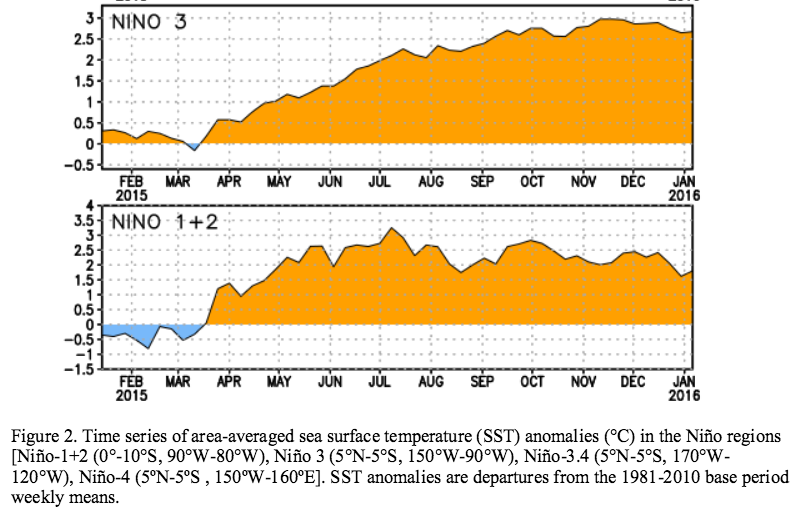
El Niño has already produced significant global impacts and is expected to affect temperature and precipitation patterns across the United States during the upcoming months (the 3-month seasonal outlook will be updated on Thursday January 21st). The seasonal outlooks for January – March indicate an increased likelihood of above-median precipitation across the southern tier of the United States, and below-median precipitation over the northern tier of the United States. Above-average temperatures are favored in the West and northern half of the country with below-average temperatures favored in the southern Plains and along the Gulf Coast.
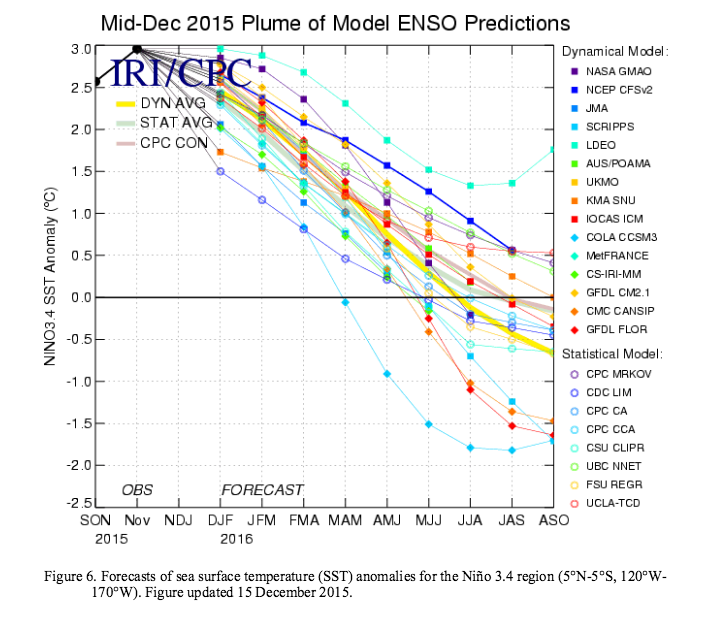 ino
ino
